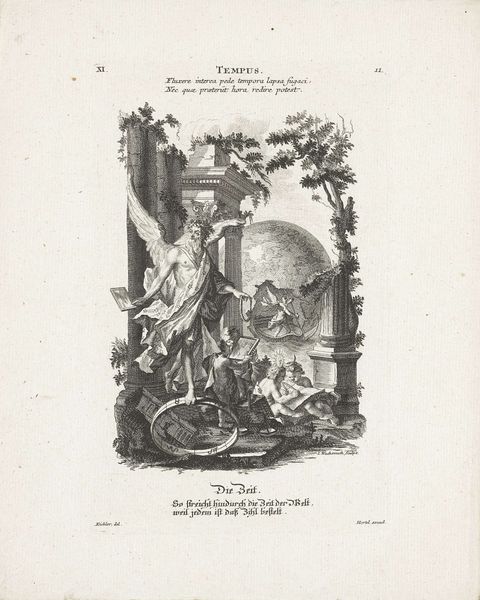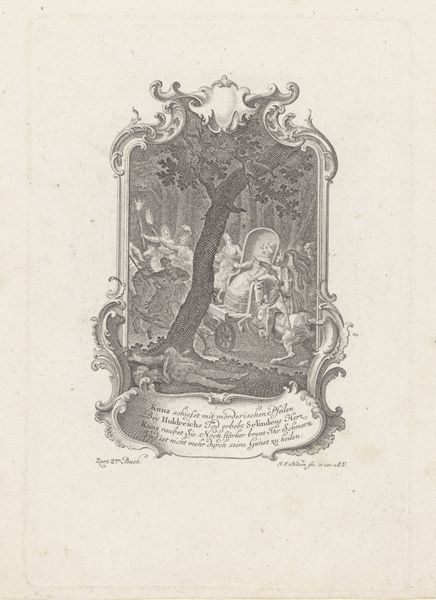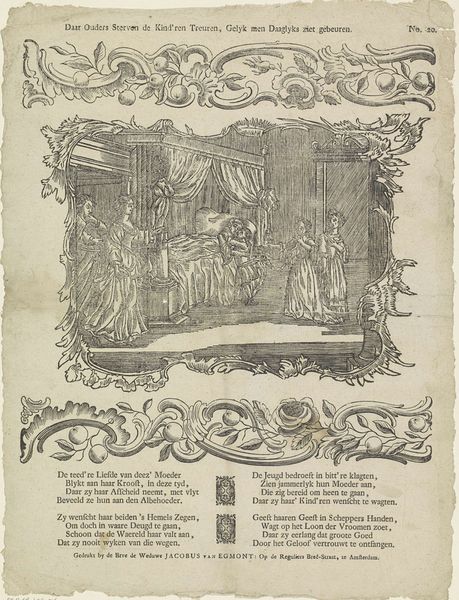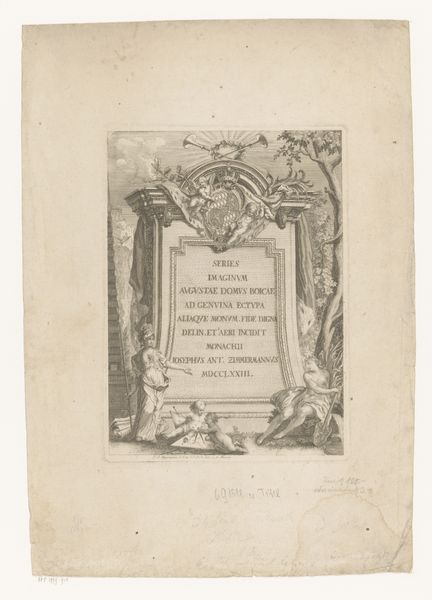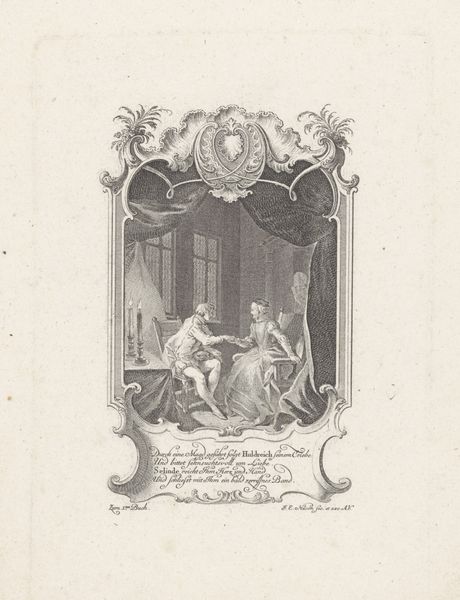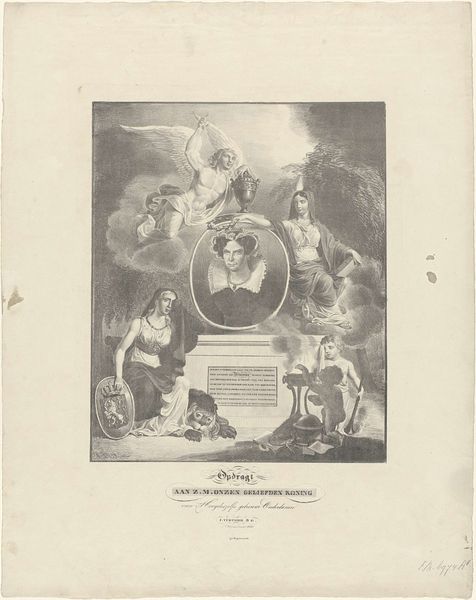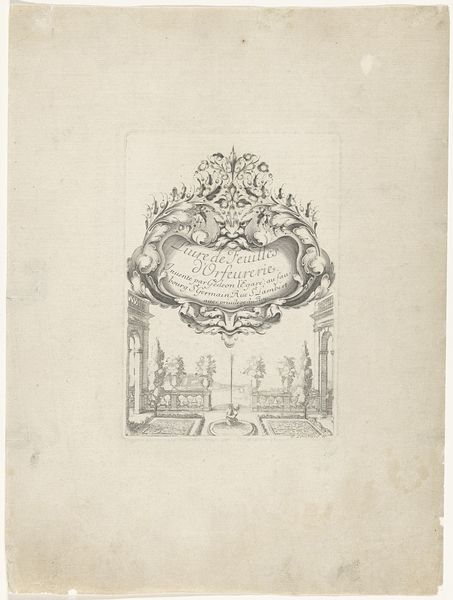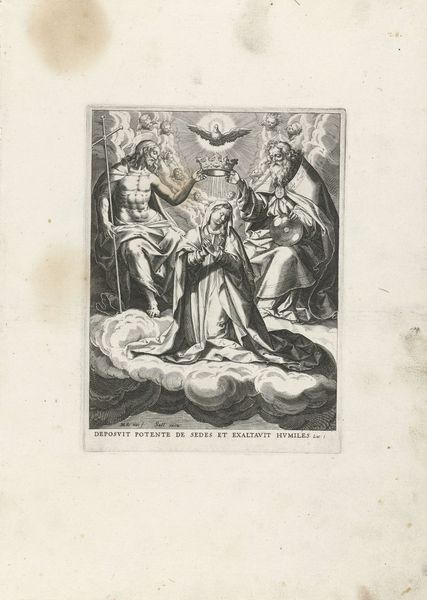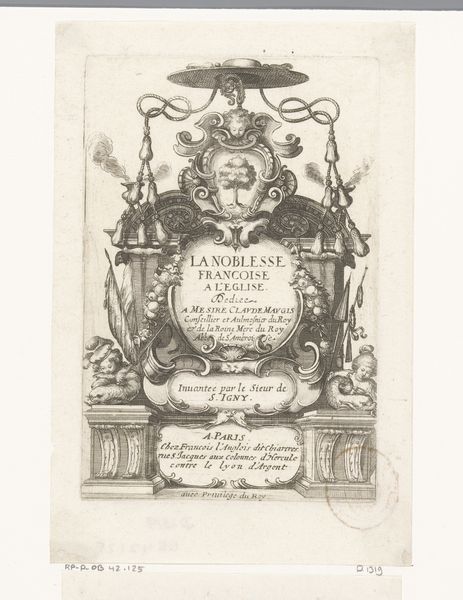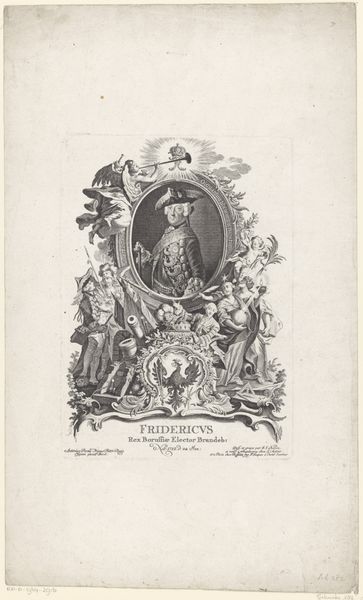
Dimensions: height 194 mm, width 127 mm
Copyright: Rijks Museum: Open Domain
Curator: Looking at this engraving, "Het begin," or "The Beginning," created by Jeremias Wachsmuth around 1758 to 1760 and housed in the Rijksmuseum, I’m struck by the ambition of its theme, this idea of Genesis captured on a relatively small scale. Editor: It's immediately imposing. The figure radiates such serene authority, yet she's poised in front of these primordial crags, engulfed in a tempest of swirling ink—there's something deeply compelling in the juxtaposition. Curator: This piece is very much of its time. Thinkers in this era grappled with classical notions. "The Beginning" seeks to visualise creation, that moment of divine action shaping cosmos, human and world. Editor: I find it particularly compelling how the artist employed black and white to evoke such complex ideas. The lines feel like they are channeling the visual culture that came out of period science or alchemy; like attempts at depicting something fundamental. How much does allegory come into play here? Curator: Heavily, I would say. That figure is allegory personified—possibly Divine Wisdom. And everything in the image reinforces symbolic readings from the flaming orb that may suggest creation’s active state, to those jagged rocks of pre-formation. Baroque loved to use visual codes, giving art depth in an age of encyclopedic learning. This creates this interesting tension in which everything might relate. Editor: Which may allow interpretations from multiple angles: an early proto-feminist might say that image also depicts that at its source there is some kind of primal divine feminine… The interplay between science, religion and art at the time also adds dimensions into that image's legacy that the engraving carries with it. Curator: Absolutely! These images offer rich interpretations and social insight, a window into 18th century philosophy, beliefs, science, as filtered through Wachsmuth’s creative hands. It also becomes a visual legacy of a desire to reconcile the spiritual with this scientific approach, I suppose. Editor: Indeed, studying it has only highlighted for me the ways images condense—but never finalize—enduring cultural fascination with moments of beginning, artistic techniques, or historical contexts.
Comments
No comments
Be the first to comment and join the conversation on the ultimate creative platform.
